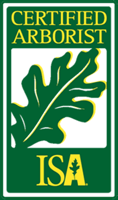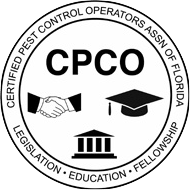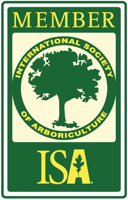Root Problems in South Florida Trees: Identification and Prevention
South Florida’s lush, subtropical environment is both a blessing and a challenge for trees. While the region’s warm temperatures and abundant rainfall support rapid growth, they can also lead to a host of root-related issues. From poor drainage in heavy rain to soil compaction from nearby construction, a tree’s roots face risks that can weaken its stability, stunt its growth, and ultimately threaten its health. Recognizing and preventing these root problems not only protects individual trees but also helps preserve the wider landscape’s beauty and resilience.
In this post, we’ll explore the most common root problems for South Florida trees, explain how to identify warning signs, and offer best practices to prevent long-term damage. Whether you’re a homeowner with a single palm tree or a property manager overseeing acres of greenery, these tips will help you maintain a strong, thriving canopy.
1. Why Root Health Matters
Roots are a tree’s anchor, providing physical support while absorbing the water and nutrients essential for growth. In South Florida’s climate—where tropical storms and hurricanes can bring powerful winds—healthy roots are critical for keeping trees upright. Additionally, strong, well-nourished roots help trees resist pests and diseases, and they enable faster recovery from stressors like drought or minor storm damage.
When roots are compromised, you may notice:
- Slower Growth: Trees can’t uptake enough water or nutrients to sustain normal development.
- Yellowing or Wilting Leaves: Nutrient deficiencies show up quickly in leaves.
- Reduced Stability: Leaning trunks, especially after heavy rain, can suggest root issues.
Being proactive can save you from costly tree removals, emergency calls, and property damage if a tree fails during severe weather.
2. Common Root Problems in South Florida
a) Waterlogged or Poorly Drained Soil
South Florida’s rainy season can produce downpours that quickly saturate the ground. If the soil around your tree holds water too long (often due to high water tables or clay-like substrates in certain areas), the roots may suffer from oxygen deprivation. Prolonged waterlogging also invites fungi and bacteria that cause root rot.
Signs to Watch For:
- Standing water or mud around the tree base for days after rain.
- Mushy or decaying roots when inspected.
- Foul smells from soil near the trunk.
b) Soil Compaction
Frequent foot traffic, heavy machinery, or even excessive vehicle parking can lead to compacted soil. When soil particles are pressed too tightly together, air and water struggle to penetrate, suffocating roots and stunting tree growth.
Signs to Watch For:
- Hard, dense soil that’s difficult to dig.
- Puddling water on the surface instead of draining.
- Patchy grass or dying groundcover around the tree base.
c) Girdling Roots
Girdling occurs when roots grow around the trunk or other major roots, effectively strangling the tree’s nutrient pathways over time. Often a result of improper planting, poor soil conditions, or container-grown trees that weren’t corrected at planting, girdling roots limit the flow of water and nutrients up the trunk.
Signs to Watch For:
- A trunk that appears pinched or indented at soil level.
- Visible roots circling the base of the tree.
- Gradual canopy decline or dieback.
d) Mechanical Damage
Construction projects, landscaping renovations, or even lawn equipment can easily cut or tear roots. South Florida’s building boom means many trees experience damage when trenches are dug for utilities, driveways are expanded, or new structures go up nearby.
Signs to Watch For:
- Fresh, exposed roots or bark damage at the base.
- Sudden leaning or instability shortly after construction.
- Sawdust-like residue near severed roots.
e) Root Rot and Fungal Infections
Hot, humid conditions can foster fungal diseases that attack roots. Phytophthora species, for example, thrive in wet soil and can quickly kill a tree by destroying its root tissues. Palms are particularly vulnerable to certain fungal pathogens that target their trunks and root systems.
Signs to Watch For:
- Wilting or discolored fronds/leaves despite adequate watering.
- Spongy, discolored root tissues; sometimes a foul smell.
- Stunted or no new growth over multiple seasons.
3. Preventing and Addressing Root Problems
a) Improve Drainage
Elevating planting beds or using raised mounds can help roots stay out of saturated soil. Installing French drains or swales around your property also diverts excess water away from trees.
- Tip: If you suspect deep waterlogging, consult an arborist or landscaper for grading solutions.
b) Loosen Compacted Soils
Aerating the soil around trees—by vertical mulching or using specialized tools—can break up compaction. Adding organic matter like compost also helps create air pockets for roots to thrive.
- Tip: Avoid driving heavy machinery close to the tree’s root zone. Rope off critical areas during construction projects.
c) Correct Girdling Roots
In some cases, girdling roots can be gently cut or repositioned when discovered early. Severe cases might require a professional approach, especially if major roots are involved.
- Tip: Always inspect the root ball of new container-grown trees and untangle or cut circling roots before planting.
d) Protect Roots from Damage
If you’re planning to dig or renovate near a tree, mark the root zone and work around it if possible. For large projects, consult an arborist who can advise on tree protection strategies, such as air excavation to expose and preserve critical roots.
- Tip: Remind lawn care teams to avoid hitting tree trunks with weed trimmers or mowers, which can wound bark and expose roots to infection.
e) Monitor and Treat for Fungus
If you notice symptoms of root rot or fungal infection, seek professional help immediately. Treatments may include fungicidal drenches, improving drainage, or removing severely affected areas.
- Tip: For palms, keep mulch a few inches away from the trunk to discourage fungal growth near the base.
4. Ongoing Maintenance for Healthy Roots
Maintaining a healthy root zone is an ongoing process that involves consistent observation and care. Here are some additional steps:
- Mulch Properly: A 2–3 inch layer of organic mulch around the tree base helps retain moisture, regulate temperature, and reduce weeds—just be sure not to pile mulch against the trunk.
- Water Wisely: Instead of frequent shallow watering, give your trees deep, infrequent soaks to encourage roots to grow downward.
- Fertilize Judiciously: Over-fertilizing can burn roots, especially in sandy South Florida soils. Conduct soil tests to determine nutrient needs before applying fertilizer.
- Regular Inspections: Check for signs of leaning, exposed roots, or unusual leaf discoloration. Catching a minor issue early can prevent a larger disaster.
5. When to Call an Arborist
Some root problems are easily corrected with basic knowledge and elbow grease, but professional intervention is key if:
- The tree is large and shows signs of severe instability.
- You discover extensive decay or a major fungal infection.
- Construction plans threaten extensive root zones.
- Girdling roots appear too large or too embedded to safely remove yourself.
A certified arborist understands the complexities of South Florida soil, climate conditions, and local regulations. They can diagnose root issues accurately and suggest tailored solutions—from air spading to specialized treatments that boost root health.
Root problems are a hidden but critical concern for South Florida’s trees. By recognizing common issues—like poor drainage, soil compaction, girdling roots, and fungal infections—you can address them before they escalate into full-scale emergencies. And with proactive practices like proper mulching, mindful watering, and protective measures during construction, you’ll create an environment where trees can anchor deeply, withstand storms, and flourish for years to come.
Still have questions about your tree’s root health? Don’t wait until a lean or sudden collapse reveals a bigger problem. Contact Zimmerman Tree Service for a professional assessment. Our certified arborists specialize in diagnosing root issues and implementing effective, eco-friendly solutions to keep your South Florida landscape thriving.





